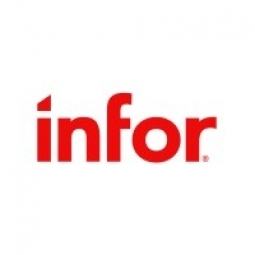公司规模
Large Corporate
地区
- America
国家
- United States
产品
- Infor Birst
技术栈
- Business Intelligence
- Data Analytics
实施规模
- Enterprise-wide Deployment
影响指标
- Revenue Growth
- Customer Satisfaction
技术
- 分析与建模 - 实时分析
适用行业
- 零售
适用功能
- 销售与市场营销
- 商业运营
服务
- 数据科学服务
关于客户
Diane von Furstenberg (DVF) 是一个全球奢侈生活方式品牌,也是美国时尚界的顶级品牌之一。该公司于 1972 年推出裹身裙,彻底改变了时尚界,自此在业界建立了良好的声誉。DVF 总部位于美国纽约州纽约市。该公司希望通过转向直接面向消费者 (DTC) 的模式,迈出业务发展的下一步。为了实现这一目标,DVF 求助于商业智能和分析解决方案 Infor Birst。
挑战
Diane von Furstenberg (DVF) 希望将重点从合作伙伴销售转向直接销售,将所有在线流量和销售直接引向 dvf.com。这需要保持正确的内容、产品、定价和库存水平。还必须密切监控利润率,以确保在线降价不会对盈利能力产生负面影响。拥有跨商店和在线可见的 KPI 对于做出最佳库存和定价所需的调整至关重要。而对客户互动的完全可见性意味着 DVF 可以更好地识别客户群体并向他们提供合适的优惠。
解决方案
DVF 实施了 Infor Birst,以了解总销售额,从而使公司能够每天了解实际需求。这有助于 DVF 确保电子商务和商店拥有适当的库存,以提高销售率。Birst 还使 DVF 能够正确细分其客户,使公司能够通过电子邮件、Facebook 和 Google 付费搜索创建有针对性的优惠。Birst 丰富的报告和可视化体验使 DVF 能够快速轻松地提供高管和商店级报告,并创建新的仪表板以支持新的业务需求和决策。
运营影响
数量效益

Case Study missing?
Start adding your own!
Register with your work email and create a new case study profile for your business.
相关案例.

Case Study
Improving Production Line Efficiency with Ethernet Micro RTU Controller
Moxa was asked to provide a connectivity solution for one of the world's leading cosmetics companies. This multinational corporation, with retail presence in 130 countries, 23 global braches, and over 66,000 employees, sought to improve the efficiency of their production process by migrating from manual monitoring to an automatic productivity monitoring system. The production line was being monitored by ABB Real-TPI, a factory information system that offers data collection and analysis to improve plant efficiency. Due to software limitations, the customer needed an OPC server and a corresponding I/O solution to collect data from additional sensor devices for the Real-TPI system. The goal is to enable the factory information system to more thoroughly collect data from every corner of the production line. This will improve its ability to measure Overall Equipment Effectiveness (OEE) and translate into increased production efficiencies. System Requirements • Instant status updates while still consuming minimal bandwidth to relieve strain on limited factory networks • Interoperable with ABB Real-TPI • Small form factor appropriate for deployment where space is scarce • Remote software management and configuration to simplify operations

Case Study
Digital Retail Security Solutions
Sennco wanted to help its retail customers increase sales and profits by developing an innovative alarm system as opposed to conventional connected alarms that are permanently tethered to display products. These traditional security systems were cumbersome and intrusive to the customer shopping experience. Additionally, they provided no useful data or analytics.

Case Study
How Sirqul’s IoT Platform is Crafting Carrefour’s New In-Store Experiences
Carrefour Taiwan’s goal is to be completely digital by end of 2018. Out-dated manual methods for analysis and assumptions limited Carrefour’s ability to change the customer experience and were void of real-time decision-making capabilities. Rather than relying solely on sales data, assumptions, and disparate systems, Carrefour Taiwan’s CEO led an initiative to find a connected IoT solution that could give the team the ability to make real-time changes and more informed decisions. Prior to implementing, Carrefour struggled to address their conversion rates and did not have the proper insights into the customer decision-making process nor how to make an immediate impact without losing customer confidence.

Case Study
Ensures Cold Milk in Your Supermarket
As of 2014, AK-Centralen has over 1,500 Danish supermarkets equipped, and utilizes 16 operators, and is open 24 hours a day, 365 days a year. AK-Centralen needed the ability to monitor the cooling alarms from around the country, 24 hours a day, 365 days a year. Each and every time the door to a milk cooler or a freezer does not close properly, an alarm goes off on a computer screen in a control building in southwestern Odense. This type of alarm will go off approximately 140,000 times per year, equating to roughly 400 alarms in a 24-hour period. Should an alarm go off, then there is only a limited amount of time to act before dairy products or frozen pizza must be disposed of, and this type of waste can quickly start to cost a supermarket a great deal of money.

Case Study
Supermarket Energy Savings
The client had previously deployed a one-meter-per-store monitoring program. Given the manner in which energy consumption changes with external temperature, hour of the day, day of week and month of year, a single meter solution lacked the ability to detect the difference between a true problem and a changing store environment. Most importantly, a single meter solution could never identify root cause of energy consumption changes. This approach never reduced the number of truck-rolls or man-hours required to find and resolve issues.








